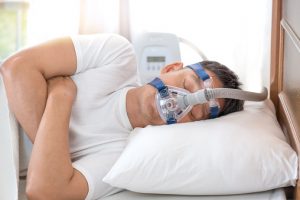
Serious sleep problem
Chronic cases of sleep apnea can lead to health problems including high blood pressure, heart issues, and even type 2 diabetes.
It can be difficult to diagnose sleep apnea as there is no blood test to identify the condition. Doctors usually can’t detect the condition during routine office visits either due to its relatively subtle symptoms. However, a newly developed diagnostic device aims to change this. A recent clinical trial has found a way to effectively detect sleep apnea across all severity level.
Sleep apnea is characterized by frequent nighttime awakenings. A patient may even experience hundreds of these episodes in a single night. The most common type of sleep apnea is the obstructive variant, which is due to the airway collapsing or becoming blocked during sleep. The following are additional symptoms of sleep apnea:
- Loud snoring
- Abrupt awakening
- Shortness of breath
- Awakening with a dry mouth or a sore throat
- Morning headache
- Difficulty falling asleep
- Excessive daytime sleepiness
- Attention problems
- Irritability
Problem with recognition
Recognizing this condition is where it gets a little tricky, as your doctor will have to pick up on signs and symptoms if it’s not brought to their attention directly. The current diagnostic procedure requires a suspected sleep apnea patient to be admitted overnight to a sleep disorder center. This is done to accurately monitor overnight breathing. The use of complicated equipment is utilized to analyze the heart, lung, and brain activity during sleep, as well as breathing patterns and blood oxygen levels. This is called a nocturnal polysomnography test.
However, diagnosing sleep apnea may become a lot easier. A new, disposable patch has proven to effectively detect the condition from the comfort of your own home.
“Our study provided clinical validation of a new wearable device for diagnosing sleep apnea. It was most surprising to us how well this inexpensive miniature device performed in comparison with in-lab sleep studies,” said principal investigator Maria Merchant, CEO of Somnarus Inc.
Effective form of detection
To test this new product, simultaneous polysomnography and patch recordings from 174 subjects were studied in addition to a home usability study. The device was found to successfully identify sleep apnea in 38 out of 39 users. It was also successful at collecting at least four hours of sleep data. Subjects were able to use the device with minimal instruction.
“Most home sleep diagnostic devices are difficult for patients to use and are disruptive to patient’s sleep. Our study showed that this wearable home sleep monitor is very comfortable, easy to use and does not negatively affect sleep,” said Merchant.